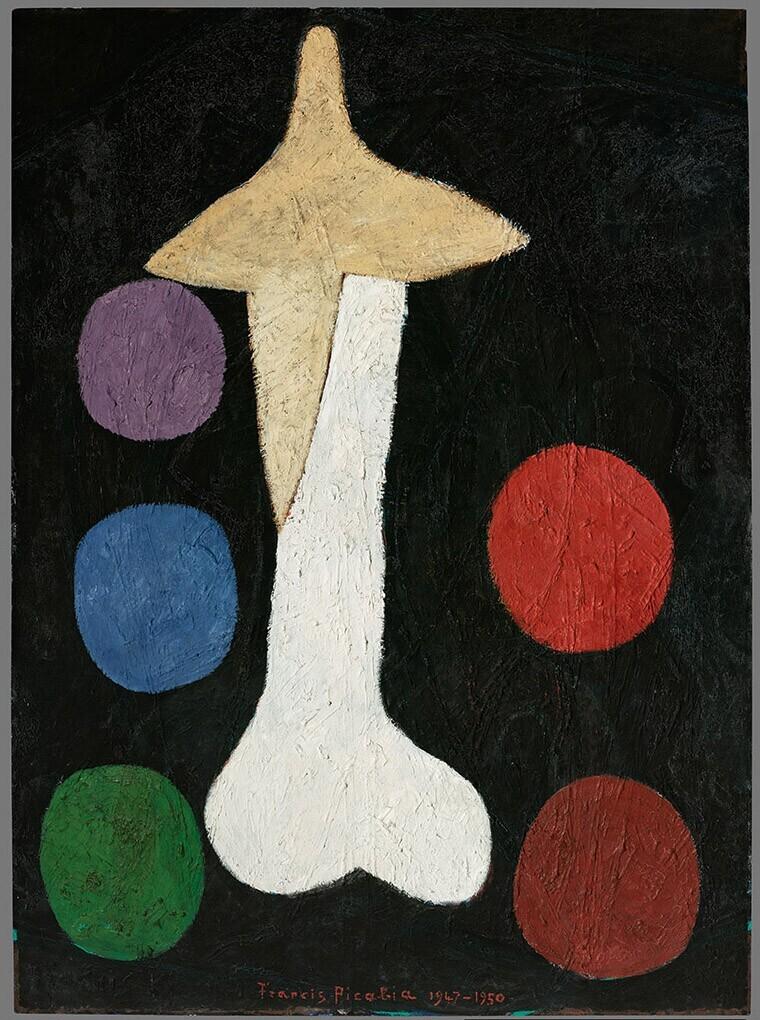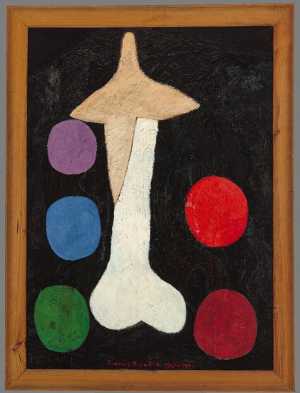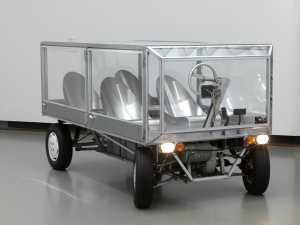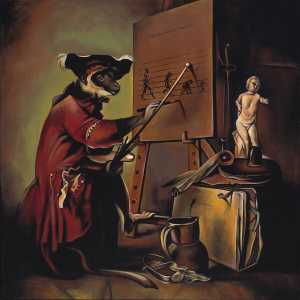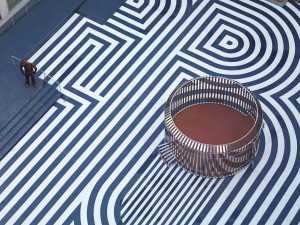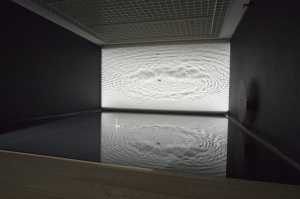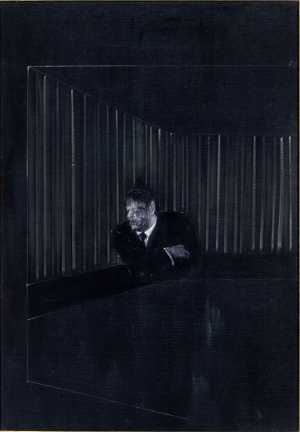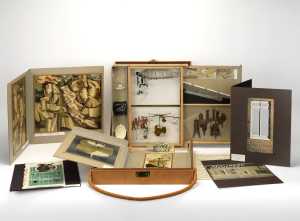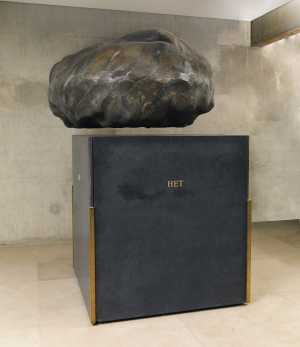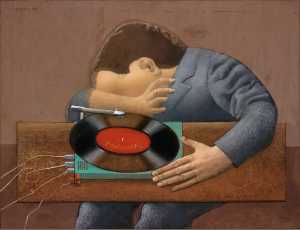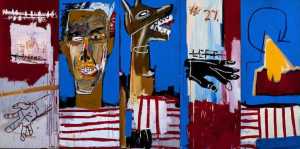Surrealism is often associated with illusionist paintings depicting an impossible reality. But surrealism is above all a way of life based upon absolute freedom of the mind. Picabia is an example of someone who lived such a life. After meeting Duchamp he began to make 'mecanomorphic' works; thereafter he changed his style regularly and was both for and against surrealism.

Specifications
| Title | Egoïsme |
|---|---|
| Material and technique | Oil on plywood |
| Object type |
Painting
> Painting
> Two-dimensional object
> Art object
|
| Location | This object is in storage |
| Dimensions |
Height 153,6 cm Length 110,8 cm |
|---|---|
| Artists |
Artist:
Francis Picabia
|
| Accession number | 3400 (MK) |
| Credits | Purchased with the support of Mondriaan Fund, 1996 |
| Department | Modern Art |
| Acquisition date | 1996 |
| Creation date | in 1947-1950 |
| Provenance | Olga Picabia, 1953-88; Galerie Neuendorf, Frankfurt am Main 1988-89; Waddington Galleries, London 1989-93; Geertjan Visser, Retie 1993-96 |
| Exhibitions | Paris 1948; Düsseldorf/Zurich/Stockholm 1983-84; Edinburgh/Frankfurt 1988; Rotterdam 1996a; Hamburg/Rotterdam 1997-98; Paris 2002-03; Rotterdam 2013-14a; Zurich/New York 2016-17 |
| Internal exhibitions |
The Collection Enriched (2011) Een paraplu, een naaimachine en een ontleedtafel. Surrealisme à la Dalí in Rotterdam. (2013) De collectie als tijdmachine (2017) Lievelingen (2024) |
| External exhibitions |
Picabia: A Retrospective (2016) Picabia: A Retrospective (2016) Dal nulla al sogno (2018) Museum Boijmans Van Beuningen @ Rijksmuseum (2023) |
| Research |
Show research A dream collection - Surrealism in Museum Boijmans Van Beuningen |
| Literature | Borràs 1985, p. 484, cat. no. 868, fig. 1079; Hamburg/Rotterdam 1997-98, p. 123; Boulbès 1998, p. 123; Arnauld 2002, p. 398 |
| Material | |
| Object | |
| Geographical origin | France > Western Europe > Europe |
Entry catalogue A dream collection - Surrealism in Museum Boijmans Van Beuningen
Author: Marijke Peyser

Francis Picabia’s painting Egoïsme was one of the twenty-five works shown at Galerie des Deux-Îles in Paris from 15 November to 4 December 1948.[1] The artist depicted five circles in bright colours against a dark background. They encircle an elongated element that is reminiscent of a bone and a star, although a phallus seems more likely. The male sexual organ also dominates other paintings from the same period, as in Pistill (1946-47) and I don’t care (1947), and has female ‘counterparts’ in Maintenant et autrefois (1946) and Veuve (1948).
Egoïsme is probably not in the same state as it was in 1948, however, because an earlier signature and date ‘Francis Picabia 1948’ and the title ‘Egoïsme’ lower left were overpainted. During a recent restoration of the painting it came to light that Picabia had drastically changed the work.[2] In the place where the large black field with the coloured balls is situated, there were originally two horns and a linear structure behind the phallus shape – a motif that Picabia also used in a work like Le rêve de Suzanne (1949).[3] After the overpainting he gave the work a new signature and dated it 1947-50.
Egoïsme is one of the six works Museum Boijmans Van Beuningen acquired in the 1990s from the private collection of Geertjan Visser. They were a major addition to the Surrealism collection; at that time the museum had no works by Picabia. Visser bought his first Picabia, the portrait of Cravan, in the 1980s after he and his brother Martin Visser, then head curator of Museum Boijmans Van Beuningen (1978-83), had seen it at the Art Basel art fair. Visser acquired a representative ensemble of three drawings and three oil paintings.
The earliest dated work, Radio Concerts (1921-22), refers to the period when Picabia and André Breton were getting on well together.[4] This abstract drawing can be described as late Dada ‘machine-style’, a style with characteristic, strikingly two-dimensional shapes such as circles, squares, triangles and rectangles that Picabia employed in the early 1920s. In the years that followed he worked variously in figurative and abstract styles, exploring the interface of art and kitsch (see Femmes Espagnoles). The three oil paintings Egoïsme (1947-50), Viens avec moi, là-bas (1945) and Danger de la force (1947-50) were exhibited in Hamburg and Rotterdam in 1997-98 at the exhibition Francis Picabia – late schilderijen (1933-1953).[5] The exhibition aimed to show that, in his late work too, Picabia had made major contributions to the development of modern art, in particular to l’art informel, and had developed in new and unexpected directions until the very end.
Footnotes
[1] Paris 2002, p. 446.
[2] See G. Boevé-Jones and C. van Hees, ‘Egoïsme’, in the online publication Francis Picabia: Materials and Techniques, Museum of Modern Art, New York 2017, pp. 66-72: mo.ma/picabia conservation (consulted 14 March 2017).
[3] Ibid.
[4] Camfield 1979, p. 203: in 1924, the year Breton published his First Surrealist Manifesto, they had a massive disagreement about Surrealism.
[5] Hamburg/Rotterdam 1997-98.
All about the artist
Francis Picabia
Parijs 1879 - Parijs 1953
Early in his career, Francis Picabia experimented with a variety of styles, including Impressionism and Cubism. In 1911, he met Marcel Duchamp, who had an...
Bekijk het volledige profiel





